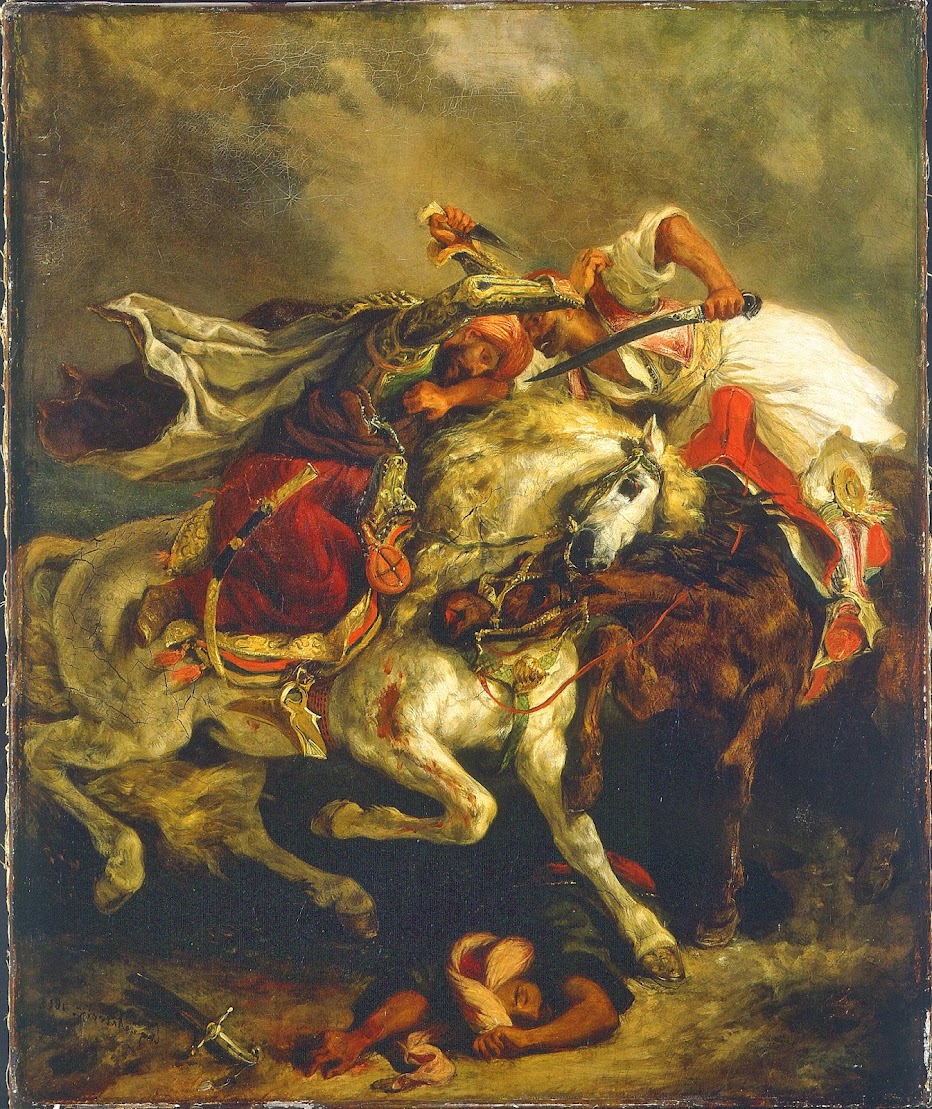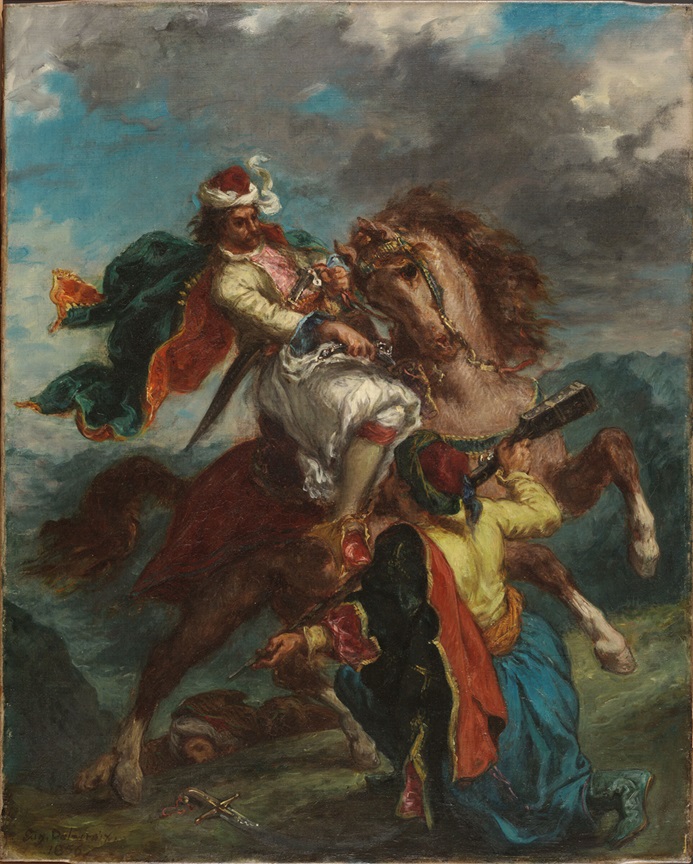Hocine Ziani
The Numidian horseman, c. 1990
Oil painting on canvas
Private collection,
Numidian cavalry was a type of light cavalry developed by the Numidians. After they were used by Hannibal during the Second Punic War, they were described by the Roman historian Livy as "by far the best horsemen in Africa."
The Numidian cavalry's horses, ancestors of the Berber horse, were small compared to other horses of the era, and were well adapted for faster movement over long distances. Numidian horsemen rode without saddles or bridles, controlling their mounts with a simple rope around their horse's neck and a small riding stick. They had no form of bodily protection except for a round leather shield or a leopard skin, and their main weapons were javelins in addition to a short sword.
Due to their expert horsemanship and agility, as well as their lack of armor or heavy weaponry, they were most suitable for harassing tactics, charging in loose formation and lobbing their javelins before wheeling off to escape the enemy's counterattack. This harassing tactic, while rarely decisive, could be extremely frustrating to a less mobile enemy, as experienced by Julius Caesar's soldiers during the latter's invasion of Africa
Hannibal's invasion of Rome during the Second Punic War is best known for his use of slow-moving war elephants, but he also employed Numidian cavalry where faster movement was needed, such as luring the Romans into a trap at the Battle of Trebia and for fighting on his right flank.
Numidian cavalry were widely known and not only fought in the Carthaginian army, but in other armies of the time as well. Again during the Second Punic War, the Romans allied with the Numidian king Masinissa who led 6000 horsemen against Hannibal's own in the battle of Zama, where the "Numidian Cavalry turned the scales".
For centuries thereafter, the Roman army employed Numidian light cavalry in separate units.
The Numidian cavalry were also used in Caesars Civil War on the side of Pompey and were used in Battle of Utica. More on Numidian cavalry
Although born in Algeria in 1953, Hocine Ziani both lives and works in France. Ziani's childhood passion was drawing, which he did so frequently and anywhere he could. Nature, his village, the community around him, and his family were his favorite subjects and it was this creative tenacity that led him to develop his own style of painting, much in line with the Orientalist tradition. Ziani's work depicts the different shades of his native Algeria and all aspects of life in the Sahara.
The background of many of Ziani's paintings resemble the luminous, romantic dust of an on-coming mirage, heightening the drama of his otherwise simple scenes, as shown in the present work, Algerian hospitality. Here, Ziani illustrates a simple act of courtesy in a mysterious, barren landscape, beautifully rendering the jewel-toned robes of the riders on their white camels set against the dust of the desert. The result is a sobering and clean composition injected with the artist's distinct tonal range and talent for shadow and light. Whether executing huge battle scenes commissioned by the Algerian government or more domestic episodes of everyday Saharan life, Ziani's trademark has become a powerful eye for detail and drama proportionate to the genre he has distinguished.
Having actively worked in Algeria from 1978 to 1993, and now in France since 1994, Ziani has been awarded honors by the Academy of Arts in Paris, the Show of the Company of the French Artists in Paris, and the International exhibition in Vittel, among others, and his work has been acquired by numerous institutions and distinguished private collections such as the National Art Museum of Algeria, the History Museum in Buenos Aires, the National Assembly of Algeria, as well as the Royal Family of Saudi Arabia, Prince Rachid of Morocco and the Constitutional Council of Algeria. Ziani is also a founding member of the Central Army Museum in Algiers and a member of the International Fine Arts Academy in Quebec, Canada. More on Hocine Ziani
Please visit my other blogs: Art Collector, Mythology, Marine Art, Portrait of a Lady, The Orientalist, Art of the Nude and The Canals of Venice, Middle East Artists, 365 Saints, 365 Days, and Biblical Icons, also visit my Boards on Pinterest
Images are copyright of their respective owners, assignees or others.
Some Images may be subject to copyright
I don't own any of these images - credit is always given when due unless
it is unknown to me. if I post your images without your permission, please tell
me.
I do not sell art, art prints, framed posters or reproductions. Ads are
shown only to compensate the hosting expenses.
If you enjoyed this post, please share with friends and family.
Thank you for visiting my blog and also for liking its posts and pages.
Please note that the content of this post primarily consists of articles
available from Wikipedia or other free sources online.








